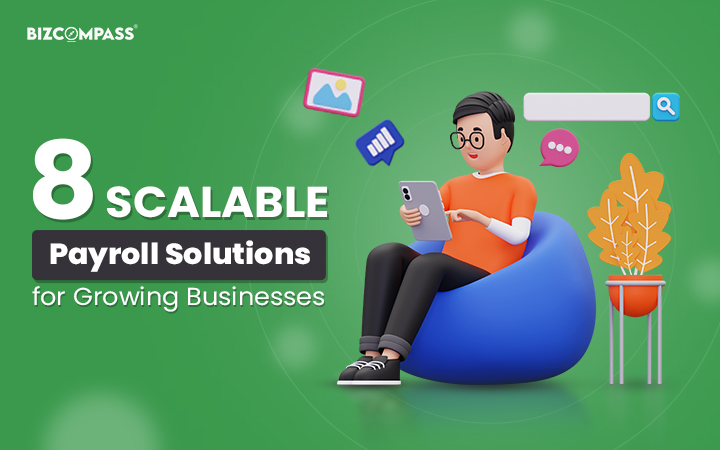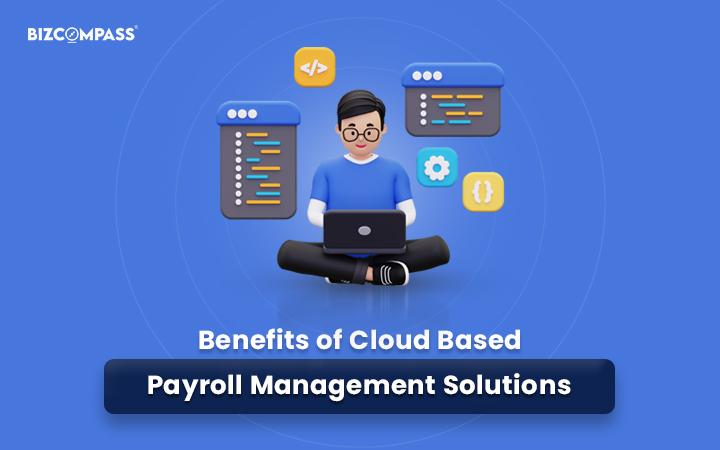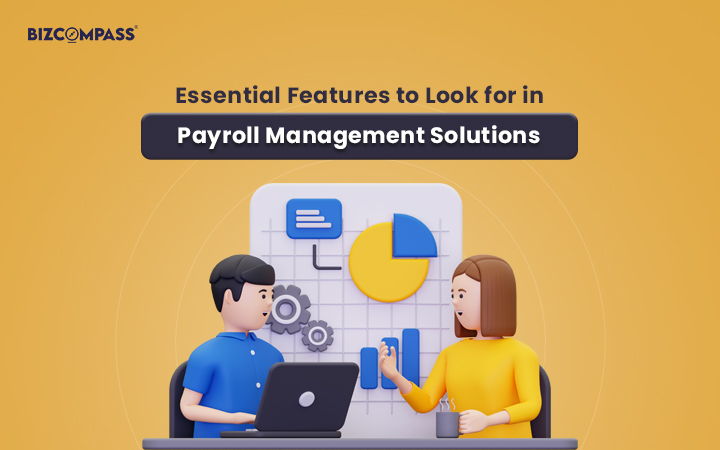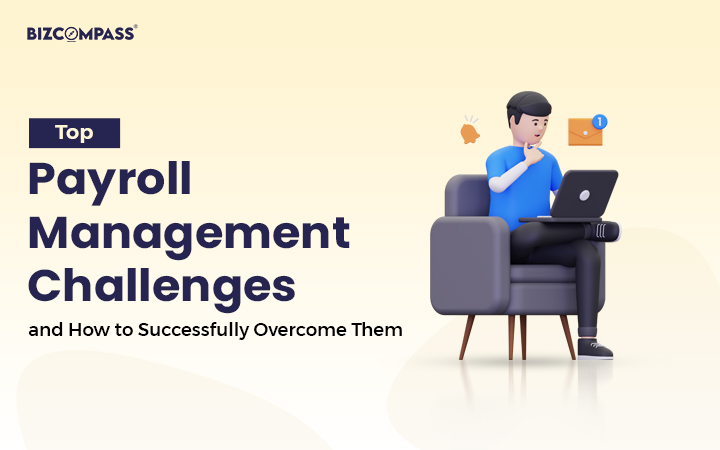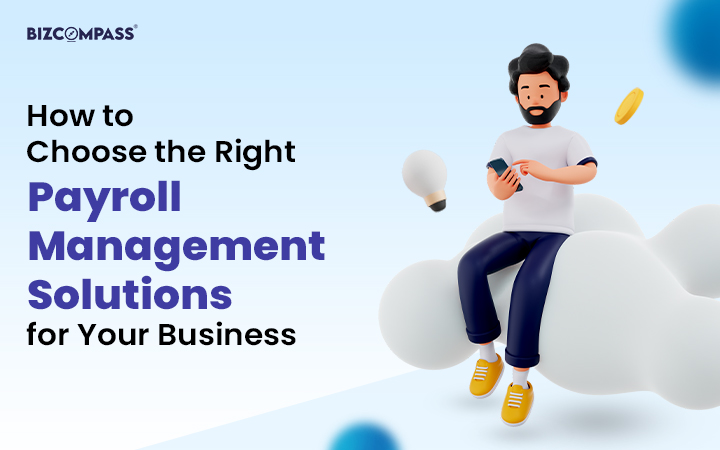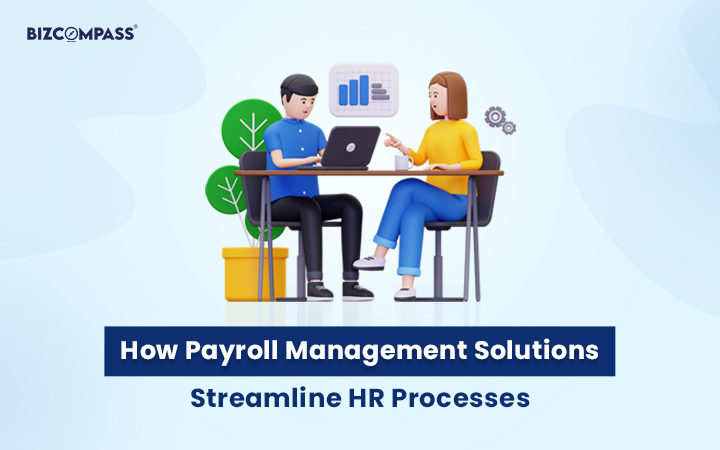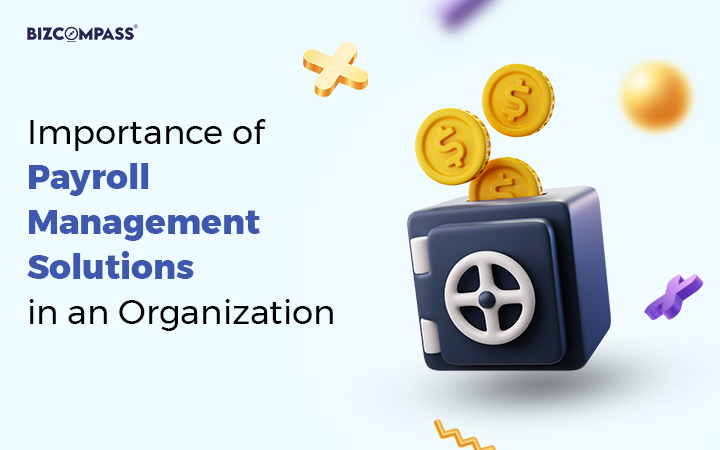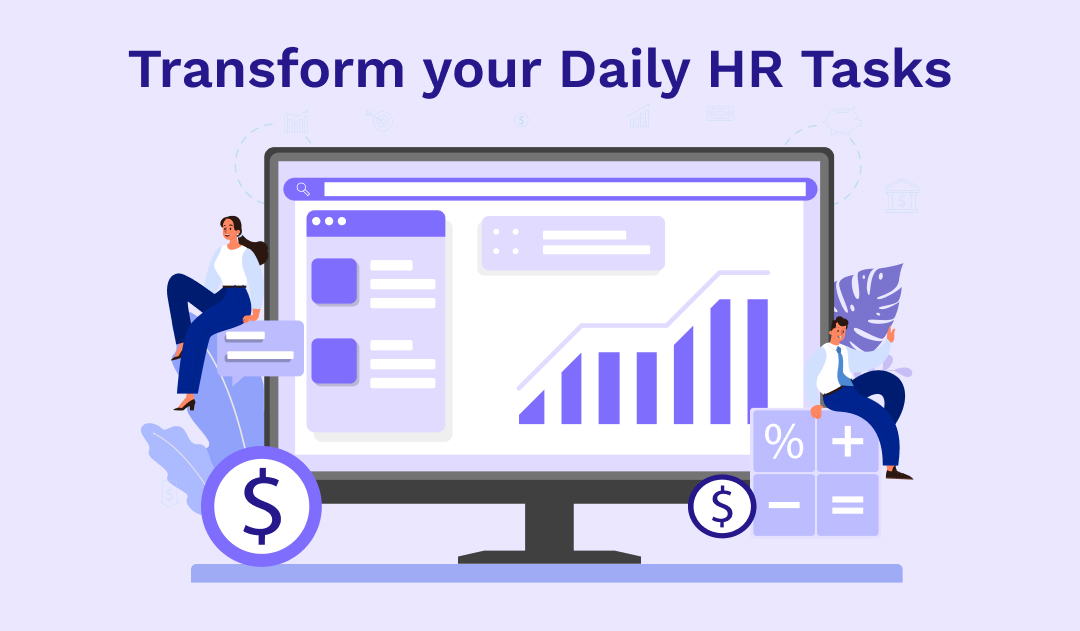Introduction
Human Resources (HR) and Payroll Management are essential organisational functions. HR is responsible for managing employees, handling recruitment, training, performance evaluation, and ensuring compliance with labor laws and regulations.
On the other hand, Payroll Management involves the calculation and distribution of employee salaries, taxes, and benefits. Both functions are crucial for a business's smooth operation and maintaining employee satisfaction and organizational compliance.
In today's fast-paced business environment, integration is key to streamlining operations and maximizing efficiency. Integrated systems allow for seamless communication and data sharing between different organisational departments and functions.
This integration eliminates the need for duplicate data entry and reduces the likelihood of errors, saving time and resources. Additionally, integrated systems provide real-time access to information, enabling better decision-making and improved collaboration among teams.
Integrated HR and Payroll Management offers numerous benefits to organizations. By integrating these functions into a single system, businesses can eliminate silos and improve data accuracy and consistency.
This integration enables HR and payroll teams to access employee information seamlessly, ensuring payroll calculations are accurate and compliant with relevant regulations.
Moreover, integrated systems can automate repetitive tasks such as data entry, payroll processing, and reporting, freeing HR professionals to focus on strategic initiatives such as talent development and employee engagement.
Integrated HR and Payroll Management systems provide valuable insights into workforce trends and financial metrics, enabling organizations to make informed resource allocation and budgeting decisions.
Additionally, integration facilitates compliance with labor laws and regulations by ensuring that payroll calculations are accurate and up-to-date with the latest tax laws and regulations.
Integrated HR and Payroll Management is vital for modern businesses seeking to optimize their operations, improve data accuracy, and enhance employee satisfaction.
By integrating these functions, organizations can streamline processes, improve decision-making, and ensure compliance with relevant regulations, ultimately contributing to overall business success.
Understanding Integrated HR And Payroll Management
Integrated HR and Payroll Management refers to integrating HR and payroll functions into a single system or platform. This integration allows for seamless coordination and data sharing between HR and payroll departments, streamlining processes and improving efficiency.
The components of integrated systems include HR modules such as employee information management, recruitment, performance management, and training, along with payroll modules for salary calculation, tax deductions, benefits administration, and compliance management.
HR and payroll systems have evolved from manual, paper-based processes to automated, digital solutions. Historically, HR and payroll functions were managed separately using disparate systems, leading to inefficiencies and data discrepancies.
However, technological advancements have led to the development of integrated HR and payroll software, consolidating these functions into a unified platform.
This evolution has been driven by the need for greater efficiency, accuracy, and compliance in managing workforce and payroll-related tasks. Integrated HR and Payroll Management systems offer several key features distinguishing them from traditional, standalone solutions.
Single Database
Integrated systems store all employee data in a single database, eliminating the need for duplicate data entry and ensuring data consistency across HR and payroll functions.
Real-Time Data Access
Integrated systems provide real-time access to employee information, enabling HR and payroll teams to make timely decisions and respond quickly to inquiries.
Automated Processes
Integrated systems automate repetitive tasks such as payroll calculations, tax deductions, and benefits administration, reducing manual errors and saving time.
Compliance Management
Integrated systems incorporate compliance features that ensure accurate payroll calculations and adhere to relevant labor laws and tax regulations.
Reporting And Analytics
Integrated systems offer robust reporting and analytics capabilities, allowing organizations to track key metrics related to workforce management, payroll expenses, and compliance status.
Integrated HR and Payroll Management systems have evolved to meet the changing needs of modern businesses, offering seamless integration, automation, and compliance features to streamline HR and payroll processes effectively.
Benefits Of an Integrated HR And Payroll Management System
01 Streamlining Processes for Efficiency
Integrated HR and Payroll Management systems eliminate data silos by storing all employee information in a single database accessible to both HR and payroll departments. This ensures data consistency and eliminates the need for redundant data entry.
These systems provide real-time updates to employee data, ensuring that HR and payroll teams have access to the latest information. This facilitates timely decision-making and reduces the risk of errors resulting from outdated or inaccurate data.
They automate routine tasks such as payroll calculations, tax deductions, and benefits administration. This streamlines processes, saves time and reduces the likelihood of errors associated with manual data entry.
By eliminating data silos, providing real-time data updates, and automating routine tasks, integrated HR and Payroll Management systems enhance accuracy and reduce errors in payroll processing and compliance management. This leads to greater efficiency in operations.
02 Cost Savings and Resource Optimization
Integrated HR and Payroll Management systems significantly reduce manual efforts and paperwork associated with HR and payroll processes.
These systems streamline operations by automating tasks such as data entry, payroll calculations, and report generation and free up employees' time for more strategic activities.
They minimize errors in HR and payroll processes by eliminating manual data entry and ensuring data consistency across departments. This error reduction leads to cost savings associated with correcting mistakes, reissuing payments, and potential compliance penalties.
Integrated HR and Payroll Management systems enable organizations to optimize their human resources by automating routine tasks and minimising errors.
Employees can focus on value-added activities such as talent development, strategic planning, and employee engagement, contributing to overall productivity and organizational success.
This efficient use of human resources maximizes the return on investment in personnel while reducing administrative overhead.
03 Compliance and Risk Management
Integrated HR and Payroll Management systems help ensure regulatory compliance by automatically updating payroll calculations and tax deductions according to the latest labor laws and tax regulations. These systems also generate compliance reports and alerts to notify HR and payroll teams of potential issues or discrepancies, enabling timely resolution.
They mitigate risks associated with payroll and HR functions by implementing built-in controls and validation checks to prevent errors and unauthorized access to sensitive employee data.
Additionally, they offer audit trails and historical data tracking capabilities, facilitating risk identification and mitigation strategies to protect against fraud, data breaches, and violations.
These systems enhance data security by implementing robust encryption, access controls, and user authentication mechanisms to safeguard sensitive employee information.
Regular security updates and compliance with industry standards further strengthen data protection measures, reducing the risk of data breaches and ensuring confidentiality, integrity, and availability of HR and payroll data.
04 Employee Experience and Engagement
Integrated HR and Payroll Management systems contribute to a positive employee experience by ensuring timely and accurate payroll processing. Employees appreciate receiving their salaries on time and without errors, which boosts morale and satisfaction within the workforce.
By automating payroll calculations and tax deductions, these systems reduce the likelihood of errors and delays, enhancing overall employee satisfaction.
The systems often include employee self-service portals, allowing employees to access and update their personal information, view pay stubs, and manage benefits and time-off requests.
These self-service features empower employees by providing convenient access to relevant HR and payroll information, improving transparency and efficiency in HR processes.
Integration with performance management systems allows for seamless alignment between HR and payroll functions. By linking performance data with payroll processes, organizations can reward high-performing employees accurately and fairly, enhancing employee engagement.
This integration also enables HR teams to proactively identify and address performance issues, contributing to continuous improvement and employee development efforts.
05 Enhancing Business Intelligence
Integrated HR and Payroll Management systems generate insightful reports by consolidating data from various HR and payroll functions. These reports provide valuable insights into workforce trends, payroll expenses, employee turnover rates, and compliance status.
By analyzing these reports, organizations can identify areas for improvement and make informed decisions to optimize HR and payroll processes.
Integrated systems enable organizations to utilize data for strategic decision-making by providing access to real-time analytics and key performance indicators (KPIs).
HR and payroll data insights help leaders identify patterns, forecast future trends, and allocate resources effectively. Organizations can develop strategies to enhance employee engagement, improve productivity, and drive business growth by leveraging data-driven insights. They enhance business intelligence by providing comprehensive data analysis capabilities.
These systems allow organizations to understand better their workforce dynamics, financial performance, and compliance status. By leveraging advanced analytics tools, organizations can extract actionable intelligence from HR and payroll data, enabling them to make strategic decisions that drive operational efficiency and competitive advantage.
Implementing Integrated HR And Payroll Management
Identify the specific requirements and objectives for integrating HR and payroll functions within the organization. Research and select an integrated HR and payroll management system that aligns with the organization's needs and budget.
Develop a detailed implementation plan outlining timelines, milestones, and resource allocation. Design the system configuration to meet organizational requirements.
Transfer existing HR and payroll data to the integrated system while ensuring data accuracy and integrity. Configure the integrated system according to organizational policies, workflows, and compliance requirements. Conduct thorough integrated system testing to ensure functionality, data accuracy, and compliance with regulatory standards.
Provide comprehensive training to HR, payroll staff, and other relevant stakeholders on how to use the integrated system effectively. Implement the integrated system as a pilot in a limited scope or department to identify and address any issues before full deployment.
Roll out the integrated HR and payroll management system across the organization, ensuring proper communication and support to end-users. Monitor system performance and gather feedback from users to identify areas for improvement and address any issues that arise.
Develop a comprehensive training program to educate employees on the features and functionalities of the integrated HR and payroll management system.
Provide ongoing support and resources to facilitate a smooth transition. Implement change management strategies to address resistance and foster a positive attitude towards the new system. Regularly assess the performance of the integrated system and gather feedback from users to identify areas for improvement.
Stay informed about updates and new features offered by the vendor and implement necessary upgrades to ensure the system remains up-to-date and aligned with organizational needs and industry best practices. Continuously monitor compliance requirements and make adjustments required to maintain regulatory compliance.
Conclusion
To conclude, integrated HR and payroll management systems streamline processes, enhance accuracy, ensure compliance, and improve employee experience through features like automation, real-time data access, and reporting capabilities. Integration of HR and payroll functions eliminates data silos, reduces manual efforts, minimizes errors, and enhances data security, leading to cost savings, resource optimization, and efficient use of human resources.
Investing in integrated HR and payroll systems is crucial for businesses seeking to optimize operations, enhance decision-making, mitigate risks, and drive long-term success.
These systems empower organizations with valuable insights, strategic capabilities, and streamlined processes, ultimately improving efficiency, compliance, and overall business performance. IfIf you are looking for an integrated system for your business, check out Bizcompass, which is the perfect match for all your business management requirements.

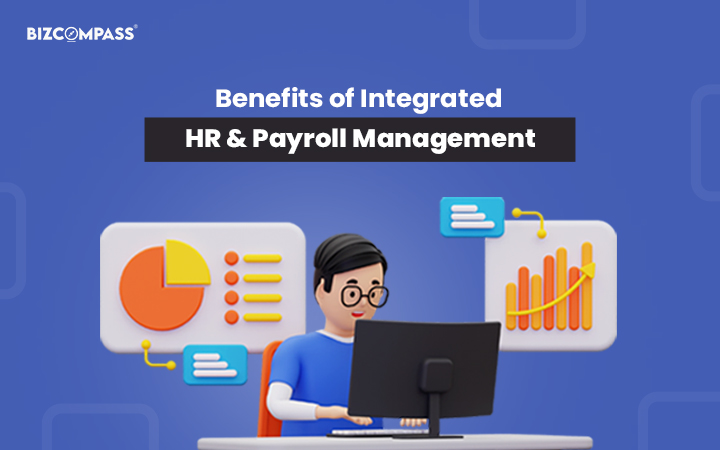
 >
>
